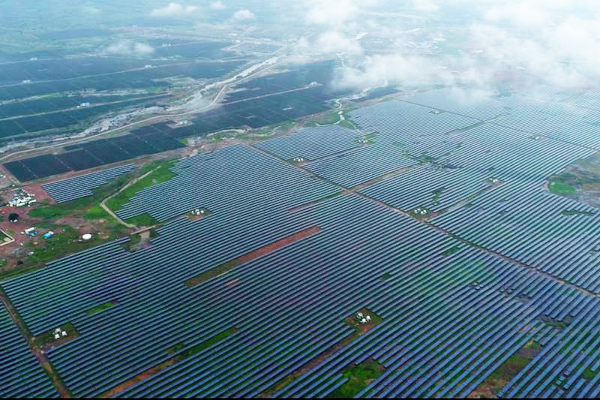India’s solar energy capacity stands at ~45 gigawatts, an increase of 17X in the last seven years, stated India while presenting its third Biennial Update Report (BUR) in the 11th Facilitative Sharing of Views (FSV) at the COP26 climate summit.
In February, the country submitted the BUR to the United Nations Framework Convention on Climate Change (UNFCCC).
The key highlight of the dialogue on India’s third BUR was the substantial growth of its solar programme and achievement of 24% decrease in emission intensity of its Gross Domestic Product (GDP) between 2005 and 2014.
Mr. J R Bhatt, Adviser/Scientist in the Ministry of Environment, stated that The country stated that it accounts for ~17% of the global population and its current annual greenhouse gas (GHG) emissions are ~5%, while historical cumulative emissions were ~4%.
Mr. Bhatt stated that this is a significant fact considering that India is predominantly vulnerable to climate change. However, India has been taking numerous mitigation actions across the country, which has gradually sustained decoupling of its economic progress from greenhouse gas emissions.
All the Parties applauded India’s efforts on the BUR and its climate actions.
There were queries about India’s multilateral initiatives to combat climate change, such as the Coalition for Disaster Resilient Infrastructure (CDRI).
India replied by stating that disaster risk is growing in developing countries, and this is a step to improve international collaboration which is much required in the current times.
On the query of rising forest cover, India stated that people’s involvement has played a central role in boosting its forest cover, and that its forests offer all the four ecosystem services.
India emphasised that it expresses its views on climate change from a position of ownership and strength.
“In 2016, 15% of the total carbon dioxide emission of India was removed from the atmosphere by the LULUCF (Land Use, Land-Use Change and Forestry).
As per a statement, “Between 2015 and 2019, the mangrove cover grew by 235 square kilometer and tree and forest cover increased by 13,031 square kilometer. Populations of Asiatic elephant, lion, rhino improved manifold in the last 5-6 years.”
India has taken various mitigation initiatives for a sustainable roadmap to development actions. The initiatives span across all the sectors in the country covering the entire society.
You may also like
-
Dot Simplifies Approval Processes For Telecom Licenses And Wireless Equipment
-
PM to Inaugurate SEMICON India 2024 on 11th September
-
Shri Piyush Goyal Sets 500 Million Tonnes Domestic Steel Production Target by 2034
-
NHAI to Track Around 100 Toll Plazas with GIS-Based Software for Seamless Movement of Traffic at National Highways
-
“Marching Towards Building A Digitally Connected Bharat and An Atmanirbhar Telecom Sector”: Union Minister Jyotiraditya Scindia
